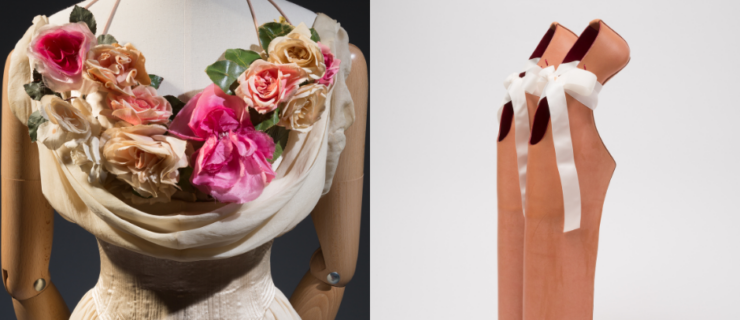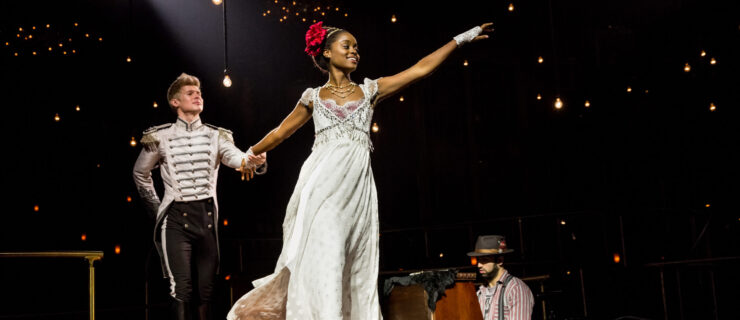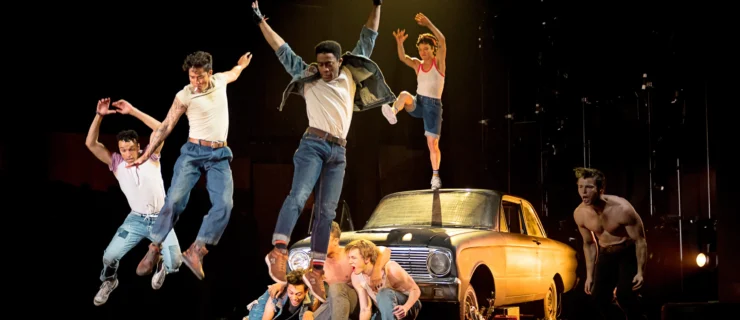Dance Arena Festival
Dance Arena Festival
Helsinki, Finland
November 22?December 12, 2001
Various venues
Reviewed by Donald Hutera
On the world dance stage, Finland is something of an unknown, hence often uninvited, guest. The country’s modern dance tradition is still relatively young, and ingrown besides. Could the stereotypically reticent Finns perhaps be more aggressive in getting themselves seen at home and abroad?
Helsinki’s biennial Dance Arena Festival is meant to help increase national and global exposure. Held in late November at venues across the city, the ten-day 2001 event culminated in the Finnish platform (or program) of the Rencontres Choréographiques Internationales de Seine-Saint-Denis. (The final platform will be in Paris in May 2002.)
No Arena dance gave me greater pleasure than Susanna Leinonen’s Babolat. This piquant female quintet, only her second work, slyly scrutinizes how the female image is learned and displayed. In brown, pink, and red harem outfits, Leinonen and four other fluid neo-odalisques work through sinuous, filigreed movement flecked with classicism. Set to a terrific soundtrack (Middle Eastern rhythms meet Mozart and Saint-Säens), this wonderfully teasing, surely crafted piece was witty and knowing about its own sensuality.
If Babolat is the sole festival dance I wasn’t ready to see end, and the one I would’ve watched again immediately, that is not to negate the achievements of other choreographers. Finnish dance is as much a theater of sound and image as of motion. At times the mélange, like the impact, is elusive. A liquid quality imbued Jyrki Karttunen’s newest works, Meryl (in which the choreographer himself interacted, on film only, with dancer Sari Lakso), and its blue-toned, ensemble companion piece, Under. Inspired by British composer Gavin Bryars’s melancholy The Sinking of the Titanic, both dances shed a beautifully mournful, romantic light on submerged lives.
Paula Tuovinen was the active centerpiece of her solo Blonde. Occasionally shielded by nothing save dark glasses, blouse, and heeled sandals, this otherwise nude performer reached, slumped, cartwheeled, stretched, sunbathed, stood on her head, squatted, jumped side to side while wagging her head, and strutted through low-down jazz moves. Tuovinen’s confident, comic enquiry into the clichés of femininity doesn’t quite sustain itself, but her vacillations between vampishness and vulnerability are intriguing.
Sanna Kekäläinen is the eponymous head of a company resident at the remarkable Cable Factory, one of Europe’s largest independent arts centers. Her provocative works Iho?Skinless and Uhri?Sacre were hit and miss. Using Stravinsky’s Rite of Spring ostensibly to tackle themes of victimization and sacrifice, the latter piece was neither intellectually sharp nor emotionally resonant. Rigorous and esoteric, Skinless was a considerably more substantial solo in which Kekäläinen twitched, undulated, crouched, and lunged through a rigorous, esoteric study of imperfect animal-into-human transformation. Her extremely present-tense behavioral extremity carried the seeds of pathos and integrity.
Like Skinless, Petri Kekoni’s The Falling Earth suggested a Beckettian universe but from a group perspective. It began powerfully with five dancers, including the demonically possessed Carl Knif, madly twisting arms and torsos while individually encased in boxes. With a jolt, the boxes tipped over and the dancers crawled out, slapping their feet together or spinning rigidly on their backsides. So far so striking. Gradually they became more upright, more human, and in direct contact, hobbling, lurching, stomping, and scratching in clenched fury. Clearly, evolution has a choreographic downside. The blunt miserablism misery of Kekoni’s arty, expressionistic mash of butoh and Nijinsky grew ridiculous, even embarrassing. I was grateful to be able to watch instead a live string quartet sawing away at composer Olli Koskelin’s driven music.
Further relief came from other quarters. Knif was one of a handful of dancers cast in several pieces. He appeared spooked in a revival of Alpo Aaltokoski’s monastic induction ceremony, Guardian of the Night. With a prerecorded score by Koskelin, his all-male ritual gripped and lulled like an urgent, kinetic prayer. Knif was also creditable as a neurotic caveman-type in Hanna Pajala’s quartet The Contact. The message?let’s trade the machinery of modern living for a more natural, healing social order?was obvious but honorable, and the multileveled choreography well executed.
Based in Denmark, Venezuelan-born Sara Gebran’s Fantasies of Boredom Dummies was a welcome addition to the Finnish platform. Adorned with wigs, chimp ears, fake breasts and buttocks, Charlotte Munch-Bengtsen and Marylise Tanvet were a charming double act, like child siblings testing supremacy over each other. Their power play had a satirical undercurrent, with pockets of aggression and naughtiness. Set to Lennart Ginman’s clever, cartoonish music, the piece was funny, meaningful, and just the right length.




